10 Hidden Texas Canyons So Stunning, You Won’t Believe They’re Real
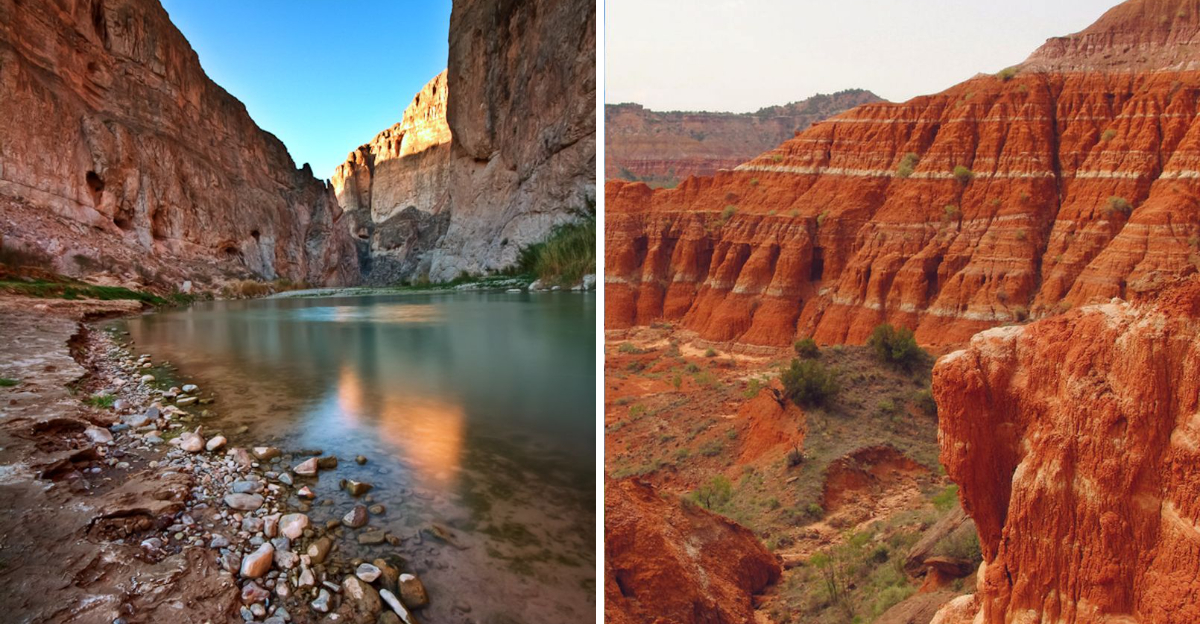
Texas is famous for cowboys, barbecue, and wide-open spaces, but hidden beneath its vast landscape are canyons that rival the beauty of any natural wonder in America.
These secret gorges showcase towering cliffs, colorful rock layers, and desert wildlife that seem almost too magical to be real. Whether you’re an adventurous hiker or just someone who loves stunning views, these hidden Texas canyons will leave you absolutely speechless.
1. Caprock Canyons
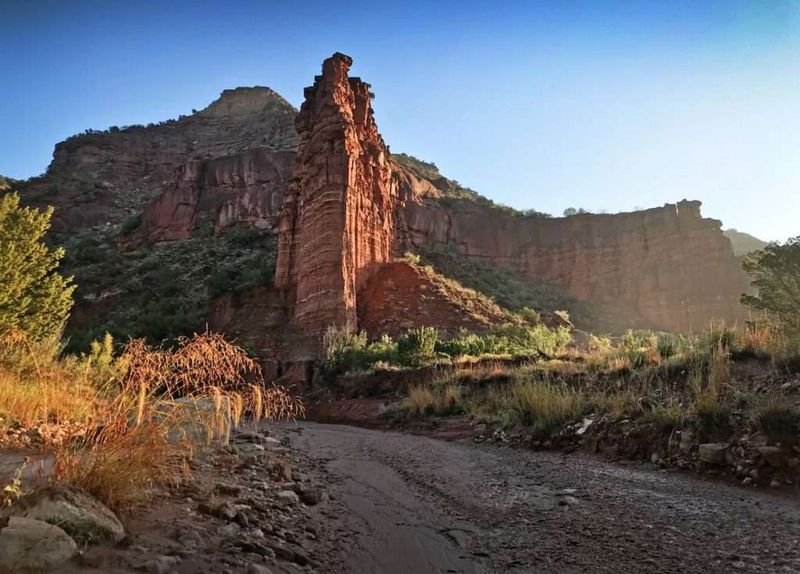
Where the flat plains suddenly drop away into rugged beauty, Caprock Canyons offers a landscape that feels like stepping onto another planet. Crimson cliffs contrast sharply with juniper trees, while the official Texas State Bison herd roams freely across the terrain.
Hiking the 64-mile Caprock Canyons Trailway rewards adventurers with breathtaking overlooks and hidden waterfalls after rare rains. The park’s geology features dramatic erosion patterns that have carved out caves, pillars, and natural bridges over countless centuries. Stargazers particularly love this spot since light pollution is virtually nonexistent, making the Milky Way pop brilliantly overhead at night.
2. Palo Duro Canyon
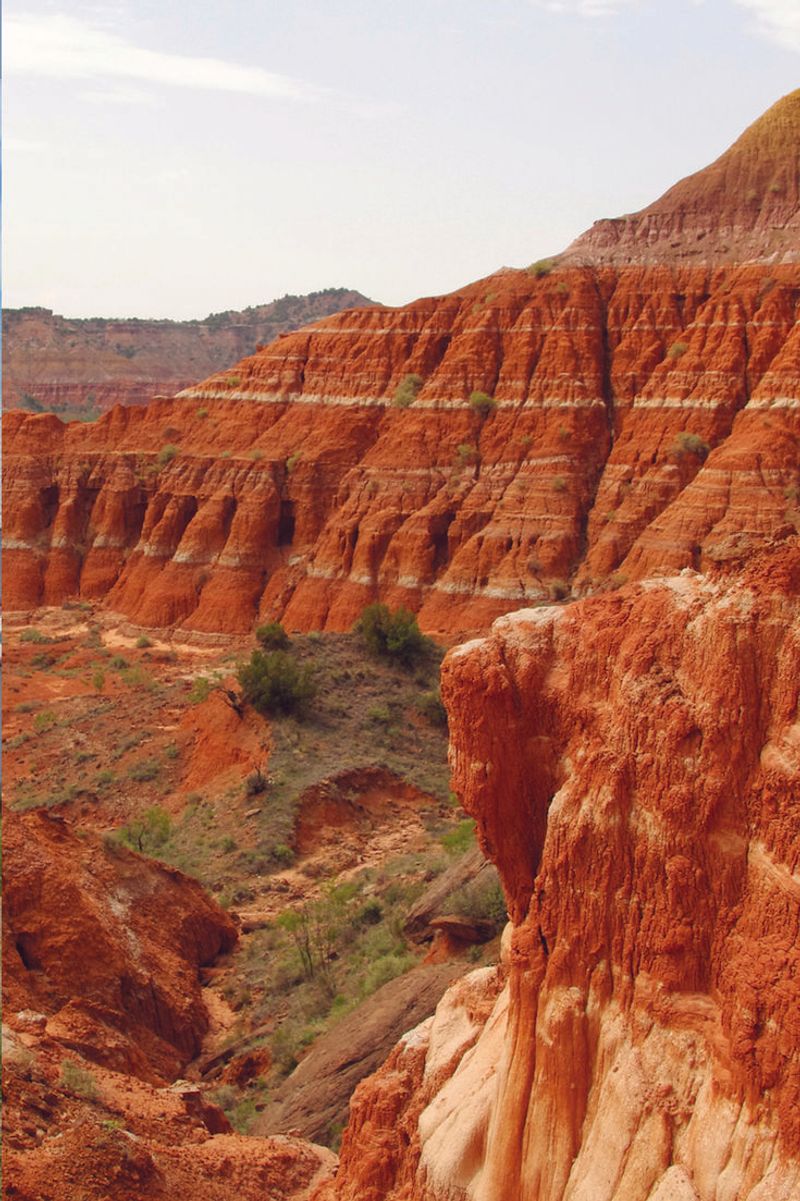
Often called the Grand Canyon’s quirky little sibling, Palo Duro Canyon stretches 120 miles long and plunges 800 feet deep into the Texas Panhandle. Layers of red, orange, and yellow rock tell stories millions of years old, creating a painter’s dream come true.
Visitors can hike, bike, or horseback ride through trails that wind past unique rock formations like the famous Lighthouse peak. Wildlife including roadrunners and mule deer call this colorful wonderland home. Located near the town of Canyon in Palo Duro Canyon State Park, it’s the second-largest canyon in America yet remains surprisingly uncrowded and peaceful.
3. Seminole Canyon

Ancient pictographs painted thousands of years ago still decorate the walls of Seminole Canyon, making it a living museum of prehistoric art. The Fate Bell Shelter houses some of North America’s oldest and most mysterious rock paintings, created by people who hunted mammoths and giant sloths.
Guided tours take visitors down steep trails into the canyon where the Rio Grande once flowed more powerfully. Desert plants like prickly pear and ocotillo cling to limestone cliffs that tower overhead. The combination of archaeological treasures and stunning geological features makes Seminole Canyon State Park an unforgettable destination for history buffs and nature lovers alike.
4. McKittrick Canyon
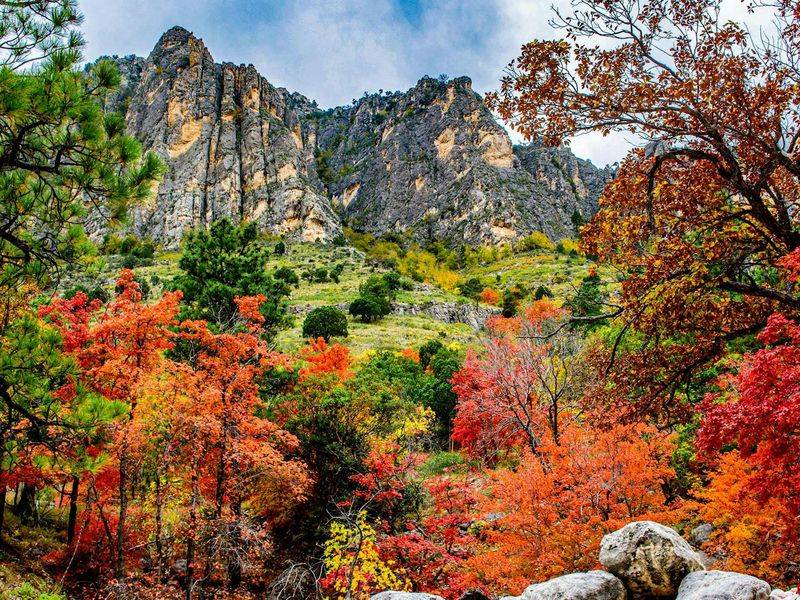
Come autumn, McKittrick Canyon transforms into Texas’s most spectacular fall foliage display, with bigtooth maples blazing orange and gold against gray limestone walls. A spring-fed creek flows year-round through this desert oasis, supporting an ecosystem found nowhere else in the Lone Star State.
The seven-mile round-trip trail follows the creek past towering ponderosa pines and Douglas firs that seem impossibly out of place in West Texas. Geologists marvel at the fossilized reef formations visible in the canyon walls, remnants of an ancient sea. Located in Guadalupe Mountains National Park, McKittrick Canyon is strictly day-use only, preserving its pristine wilderness character.
5. Dog Canyon
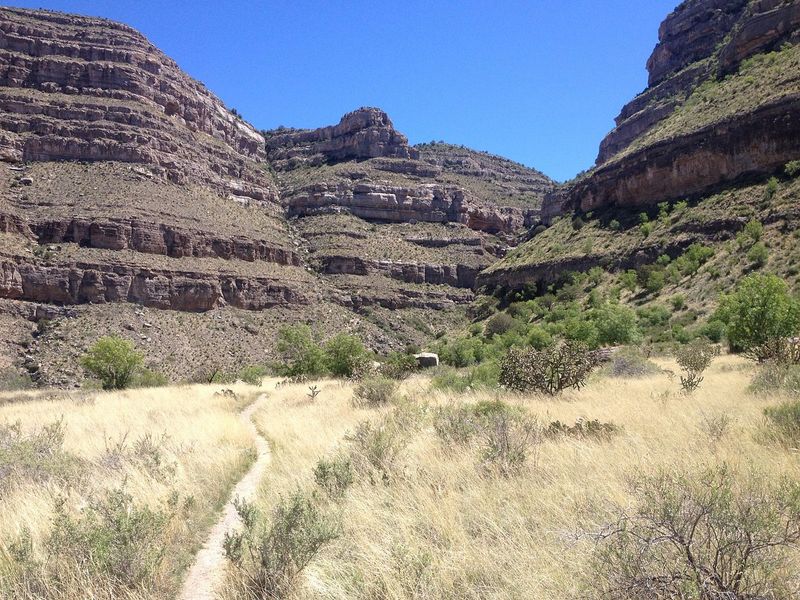
Tucked away on the remote New Mexico side of Guadalupe Mountains National Park, Dog Canyon rewards those who make the journey with solitude and jaw-dropping mountain scenery. Towering ponderosa pines shade the canyon floor while mule deer browse peacefully among the wildflowers.
The Indian Meadow Nature Trail offers an easy introduction to this hidden gem, showcasing the surprising diversity of plants and animals thriving at this high elevation. More adventurous souls can tackle the challenging Bush Mountain Trail for panoramic views that stretch into three states. Few visitors make it to Dog Canyon, meaning you might have this spectacular wilderness entirely to yourself on weekdays.
6. Santa Elena Canyon

Sheer limestone cliffs soar 1,500 feet straight up from the Rio Grande, creating one of the most dramatic sights in all of Texas. Santa Elena Canyon marks the border between the United States and Mexico, with each country claiming one towering wall of this natural wonder.
Kayakers and rafters float through the narrow gorge, dwarfed by the massive rock faces that block out the sun for hours each day. A popular hiking trail crosses the river (when water levels permit) and climbs along the canyon wall for stunning views. Located in Big Bend National Park, Santa Elena Canyon showcases the raw power of water carving through solid rock over millions of years.
7. Boquillas Canyon

Serenity defines Boquillas Canyon, where the Rio Grande flows peacefully between vertical walls that seem to touch the clouds. Unlike its more famous neighbors, Boquillas offers a gentler, more contemplative canyon experience perfect for families and less experienced hikers.
The 1.4-mile trail follows the river through a landscape of sand dunes and massive boulders before entering the canyon proper. Mexican free-tailed bats swoop overhead at dusk, hunting insects above the water’s glassy surface. Across the river, the small Mexican village of Boquillas del Carmen adds a fascinating cultural dimension to this already enchanting Big Bend National Park destination that feels wonderfully remote from modern civilization.
8. Mariscal Canyon

Adventure seekers willing to drive 20 miles of rough dirt road discover Mariscal Canyon, the most isolated and pristine of Big Bend’s river canyons. Towering cliffs rise dramatically from the Rio Grande while complete silence surrounds visitors lucky enough to reach this wilderness treasure.
The remote location means wildlife sightings are common, with black bears, mountain lions, and rare birds calling the area home. River runners consider the Mariscal Canyon float one of Texas’s premier wilderness experiences, requiring multiple days and serious preparation. For those who simply hike to the rim, the views down into this massive chasm are absolutely worth every bumpy mile of the challenging access road.
9. Closed Canyon

Narrow slot canyon walls press so close together that hikers can touch both sides simultaneously while navigating Closed Canyon’s twisting passageways. Water and time have sculpted smooth curves and dramatic angles into the volcanic rock, creating a photographer’s paradise.
The short hike requires some scrambling over boulders and careful footing on uneven terrain, but the otherworldly beauty makes every step worthwhile. Sunlight filtering through the narrow opening above creates magical light shows on the canyon walls throughout the day. Located in Big Bend Ranch State Park, Closed Canyon offers an intimate geological experience that feels more like exploring a secret tunnel than hiking through typical Texas landscape.
10. Colorado Canyon
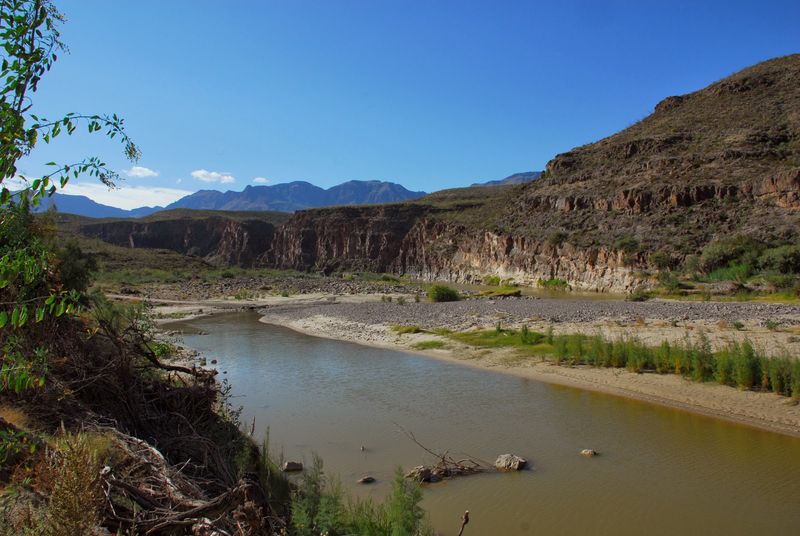
Carved by the Colorado River (not to be confused with the more famous one in Arizona), this canyon showcases the wild, untamed character of Big Bend Ranch State Park. Multi-colored layers of ancient volcanic rock create a geological textbook visible in the towering canyon walls.
Backpackers tackling the challenging Colorado Canyon Trail experience true solitude in one of Texas’s most remote wilderness areas. The river flows through pools and rapids, creating obstacles and beauty in equal measure. Desert bighorn sheep occasionally appear on the clifftops, while golden eagles soar overhead. This canyon demands respect, proper preparation, and wilderness skills, but rewards the prepared adventurer with unforgettable memories.
